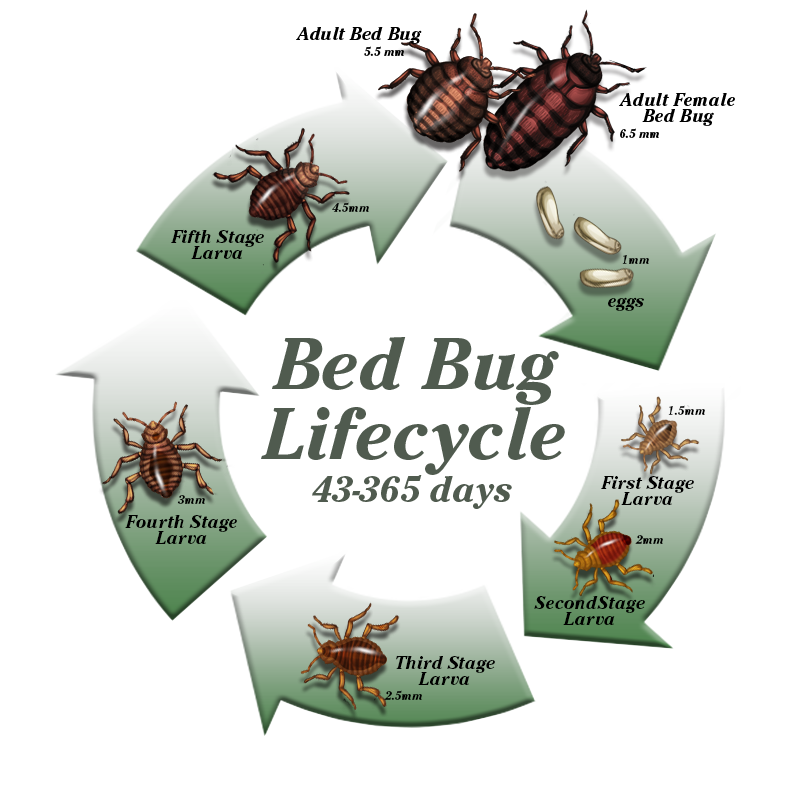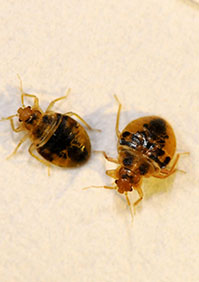Professional Bed Bug Exterminator Services for a Pest-Free Home
Professional Bed Bug Exterminator Services for a Pest-Free Home
Blog Article
Get Enlightened Regarding the Types of Pest Control Techniques and Their Advantages for Property Owners
Understanding the numerous insect control techniques readily available to property owners is vital for efficient bug monitoring. Property owners that are educated can make calculated choices that not only address bug issues but also enhance the general quality of their living setting.
Chemical Parasite Control Methods
Chemical bug control approaches are an important element of incorporated bug administration strategies for house owners seeking effective options to pest invasions. These approaches entail the application of chemical materials developed to remove or discourage insects that intimidate personal effects, health, and comfort. Usual chemicals made use of consist of insecticides, fungicides, rodenticides, and herbicides, each tailored to target particular parasites.
The primary benefit of chemical insect control is its rapid efficiency; several solutions provide immediate outcomes, decreasing pest populaces substantially quickly. In addition, developments in chemical formulas have caused products that are a lot more eco-friendly and have reduced poisoning levels for non-target organisms when applied properly.

Biological Parasite Control Strategies
All-natural bug control approaches have gotten prominence as homeowners look for more secure and a lot more lasting choices to conventional chemical strategies. Organic bug control techniques utilize all-natural predators, bloodsuckers, or pathogens to manage pest populations efficiently. This technique is not just ecologically friendly yet additionally lessens the risk of harm to non-target types, consisting of advantageous bugs and wild animals.
Among one of the most usual biological control methods includes presenting all-natural predators into the atmosphere. Ladybugs can be utilized to control aphid populaces, while nematodes target soil-dwelling pests like grubs. Additionally, parasitoids-- microorganisms that reside on or within a host-- can be employed to regulate particular insect types by laying eggs inside them, inevitably causing their demise.
Another technique is using biopesticides, which are stemmed from all-natural products such as microorganisms, plants, or minerals (bed bug exterminator). These items can efficiently target bugs while posturing minimal threat to people and pet dogs. Generally, organic pest control strategies supply house owners with an effective means of pest management that aligns with environmental concepts, advertising a healthier living setting while minimizing dependence on artificial chemicals
Mechanical Bug Control Approaches
Mechanical parasite control techniques include a variety of techniques that literally protect against or remove parasites without the use of chemicals. These techniques are specifically valuable for property owners seeking eco-friendly options while making certain the safety and security of their living rooms.
One usual method is making use of obstacles, such as webs, traps, and displays, which stop parasites from getting in homes or particular locations. For example, mounting window screens can effectively maintain insects out, while utilizing best exterminating company physical barriers around gardens can hinder bigger parasites like bunnies or deer. Furthermore, mechanical traps designed for rats can record and get rid of these parasites without the requirement for harmful materials.
Another effective approach includes using mops and vacuums to remove pests straight from surface areas. Routine cleaning and maintenance can dramatically minimize insect populations by eliminating food sources and hiding places. Utilizing tools like ultrasonic pest repellents can prevent different parasites via sound waves that are unpleasant to them however inaudible to people.
Cultural Pest Control Practices
Cultural bug control practices concentrate on changing the atmosphere and management techniques to produce conditions that are less helpful to pest invasions. These practices are fundamental in keeping a balanced ecosystem and minimizing the reliance on chemical treatments. By altering agricultural practices, house owners can efficiently prevent insects while promoting plant health and wellness.
One usual method consists of crop rotation, which interrupts the life cycles of parasites by transforming the kinds of plants expanded in a certain location (bed bug exterminator). This not only reduces pest populations however likewise enhances soil health and wellness. Furthermore, intercropping-- planting varied crops in proximity-- can puzzle insects and reduce their ability to situate their recommended host plants
Water monitoring is an additional essential facet of cultural methods. Correct watering methods can protect against standing water, which acts as a breeding ground for mosquitoes and various other pests. Moreover, preserving tidiness in and around the home, such as frequently eliminating debris and food waste, can considerably decrease parasite tourist attraction.
Integrating these cultural techniques into a detailed pest monitoring method permits property owners to create a setting that naturally prevents insects, consequently enhancing the efficiency of various other control techniques while promoting lasting horticulture and landscaping.

Integrated Insect Administration Approaches
Integrated Insect Management (IPM) represents an alternative strategy that incorporates different techniques to successfully handle insect populations while lessening environmental effect. This technique integrates organic, social, physical, and chemical practices to attain lasting bug control. By evaluating termite removal service pest populaces and their all-natural adversaries, IPM stresses monitoring and recognizing pests prior to implementing control steps.
Among the core concepts of IPM is making use of thresholds, which develop the degree of parasite task that necessitates treatment. This makes certain that therapies are used only when needed, minimizing the dependence on chemical pesticides. Biological control approaches, such as introducing all-natural predators or bloodsuckers, job in conjunction with social methods like plant turning and environment manipulation to interfere with pest life process.
Furthermore, IPM motivates using least-toxic chemical alternatives when intervention is essential, prioritizing products that present very little risk to non-target organisms and the atmosphere. For property owners, adopting IPM comes close to not just improves the effectiveness of parasite administration however additionally advertises a healthier living environment, fostering biodiversity and decreasing chemical exposure. Ultimately, IPM encourages homeowners to make informed choices that balance pest control with eco-friendly obligation.
Verdict
In verdict, recognizing the various parasite control methods encourages property owners to make informed choices relating to pest administration. Each this approach-- chemical, biological, mechanical, social, and incorporated pest management-- supplies distinctive advantages that cater to various needs and preferences.
Comprehending the various bug control approaches available to home owners is necessary for effective parasite management.Chemical pest control methods are an important part of integrated bug management approaches for house owners seeking efficient services to pest invasions. Generally, biological bug control techniques give property owners with an effective means of pest administration that straightens with environmental principles, promoting a healthier living environment while minimizing reliance on synthetic chemicals.
Social pest control methods focus on modifying the environment and monitoring techniques to create conditions that are much less favorable to pest infestations.In conclusion, comprehending the numerous bug control approaches encourages home owners to make informed choices concerning pest administration.
Report this page